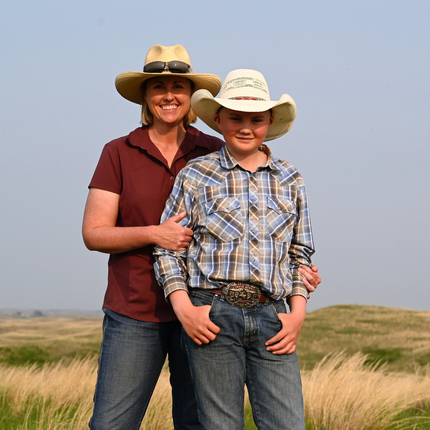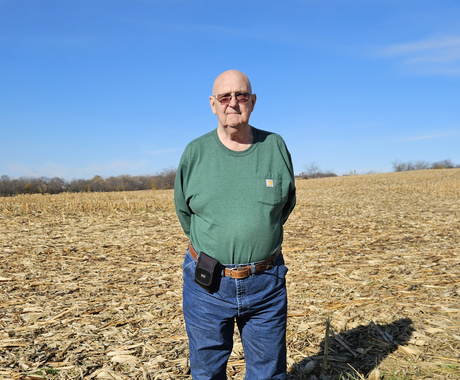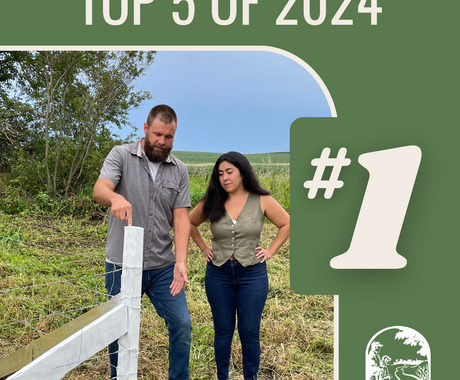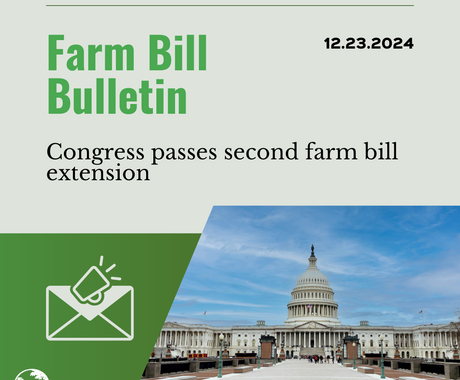By Kate Hansen, former staff member
Sarah Sortum always hoped to raise her kids on the family ranch in Nebraska’s eastern Sandhills.
She shares this goal with her brother, as the two want to ensure the ranch’s vitality for generations to come.
“At one point, we began to ask ourselves, ‘What do we want the opportunities to be like for our kids and grandkids 50 years from now? What can we do now that will support them then?’” Sarah said.
One answer was practicing conservation and stewardship of their resources.
“We really started to recognize that the healthier our resources are, the more options there are,” she said.
Fourth-generation ranchers, Sarah and her brother work alongside their parents on the family’s traditional cow-calf operation, which they have diversified in the last two decades. Today, they primarily graze and do some backgrounding, hay, and short-term cows.
After realizing she wanted to strengthen conservation on the ranch, Sarah learned about the Conservation Stewardship Program (CSP) from her local National Resources Conservation Service (NRCS) staff.
The nation’s largest working lands conservation program, CSP provides farmers and ranchers with financial and technical assistance to enhance conservation on their operations. In 2018, 13 percent of Nebraska’s agricultural land was enrolled in CSP.
To Sarah, the program seemed like a perfect fit.
“When I learned more about the CSP and I realized that it was providing landowners with an economic incentive to incorporate conservation measures, that was exactly the kind of model I was hoping for,” she recalled.
Sarah has since completed a five-year contract, and is in the middle of her second one.
Because her ranch is located in the eastern Sandhills, Sarah’s CSP contract was made to fit her operation’s unique needs.
“By far, the majority of my area is intact native grassland,” she said “We don’t have a lot of row-crop agriculture. So, our CSP plan was going to look way different than someone’s in, say, eastern Nebraska.”
The rancher’s first contract allowed her to implement practices to protect grassland wildlife and birds, such as the prairie grouse. She installed wildlife-friendly fencing, wildlife escape ramps in her tanks, and implemented new haying practices.
As part of her second contract, she developed prescribed grazing plans, monitored rangeland soil health, and sent in manure samples to track the nutritional status of her livestock.
“Taking the time to really look at the composition of our rangeland is valuable,” she said.
In addition to conservation benefits, the new practices have also provided economic benefits. The information the family gets from monitoring allows them to make better decisions for their operation.
NRCS is currently accepting applications for CSP. In Nebraska, the deadline to apply is May 29.
For farmers and ranchers thinking about applying, Sarah offers the following advice.
“Don’t be afraid, or overwhelmed, because even though it’s a big program, it’s very simple and advantageous to your operation,” she said. “There are a lot of different options, and you can tailor-make it to fit inside your operation.”
Producers interested in CSP should call their local NRCS office as soon as possible. Because of the COVID-19 pandemic, all NRCS business will be conducted by phone or internet until further notice.
Feature photo is by Michael Forsberg





